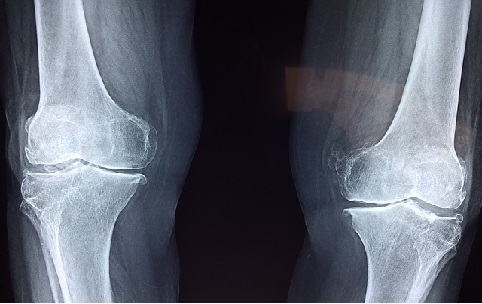
Support Movement and Locomotion
Movement is when an organism moves its body parts resulting in no change in the position of the body, while locomotion of the movement of the body parts leads to a change in its position or location. The skeletal system of the body is adapted to help perform these functions.
Main Bones of the Forelimb
A forelimb is an anterior limb, like an arm or leg, present on the body. The forelimb consists of the following bones:
- Humerus
- Ulna
- Radius
- Carpals
- Metacarpals
- Digits
Figure (i) Bones of the forelimb, Credit: Wikibooks
The humerus is a long bone, located between the elbow joint and the shoulder joint. At the elbow, it connects to the ulna. The ulna extends from the elbow to the pinky finger of the hand. It runs parallel to the radius bone. The radius stretches from the lateral side of the elbow to the thumb. The ulna is longer as compared to the radius. Carpals are the eight small bones that make up the wrist, which connects the forearm to the hands. The largest carpal bone is the capitate bone present in the hand. The metacarpals are long bones present inside the hand which is connected to the carpals and the digits/phalanges. The digits are formed as a result of several bones, known as phalanges. They are surrounded by soft tissue.
Ball and Socket Joint & Hinge Joints
The ball and socket and the hinge joints are freely-movable joints allowing different kinds of movements. These freely-movable joints are also known as synovial joints.
The ball and socket joint involves the use of two kinds of bones. One of the bones has a round end which fits into the cup-like structure of the other one. These joints are found in the shoulder and the hip joint. It permits movements in all directions, within certain limits. These joints allow rotation, flexion, extension, abduction and adduction movements.
The hinge joint is a joint that allows movement in only one axis. This includes the elbow, knee and ankle joints. The ball and socket joint involves the use of two bones, but the hinge joint involves the use of two or more bones for its proper functioning.
Action of Antagonistic Muscles at the Hinge Joint
All muscles of the body work in antagonistic pairs, meaning that when one muscle contracts, the other one relaxes. The muscle which contracts is known as the agonist, while the muscle that contracts is the antagonist.
One of the major examples of these is the biceps and triceps. These muscles work together to allow the bending and straightening of your elbows. For the process of bending, the biceps muscles contract and the triceps muscles relax. Thus, the biceps muscles is the agonist, and the triceps muscles are the antagonist. For the straightening of the elbow, the triceps muscles contract, while the biceps muscles relax. This makes the biceps muscles the antagonist, and the triceps muscle the agonist.
